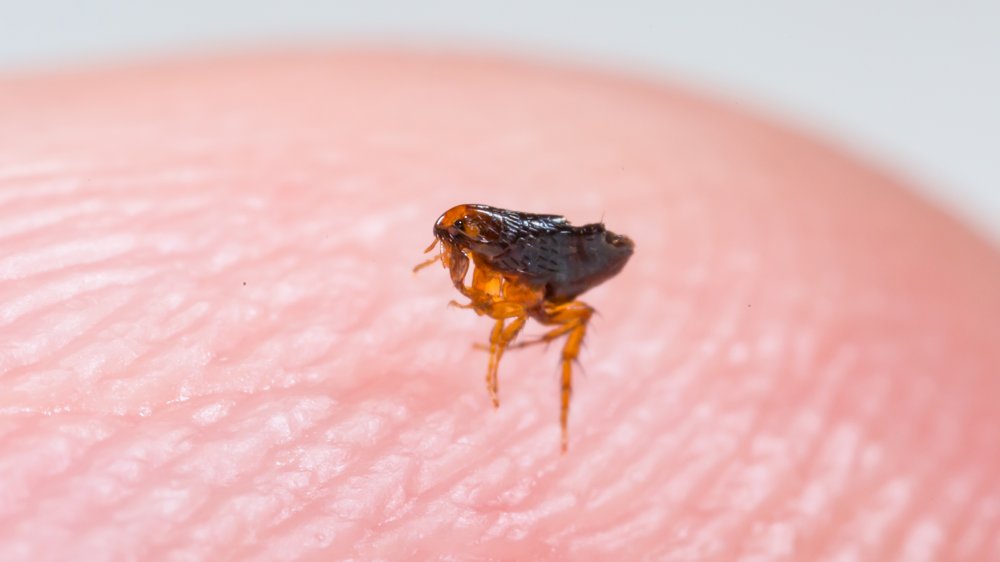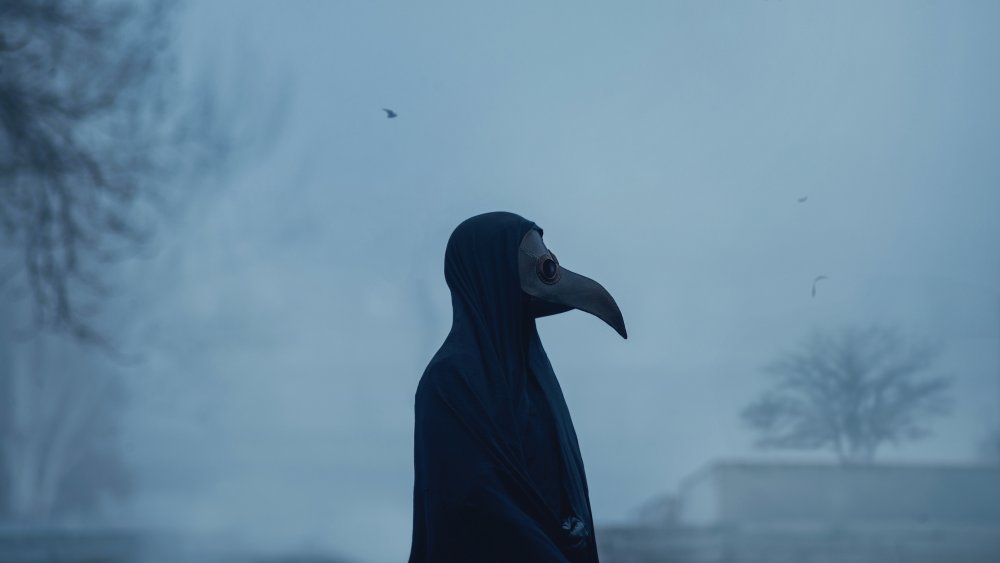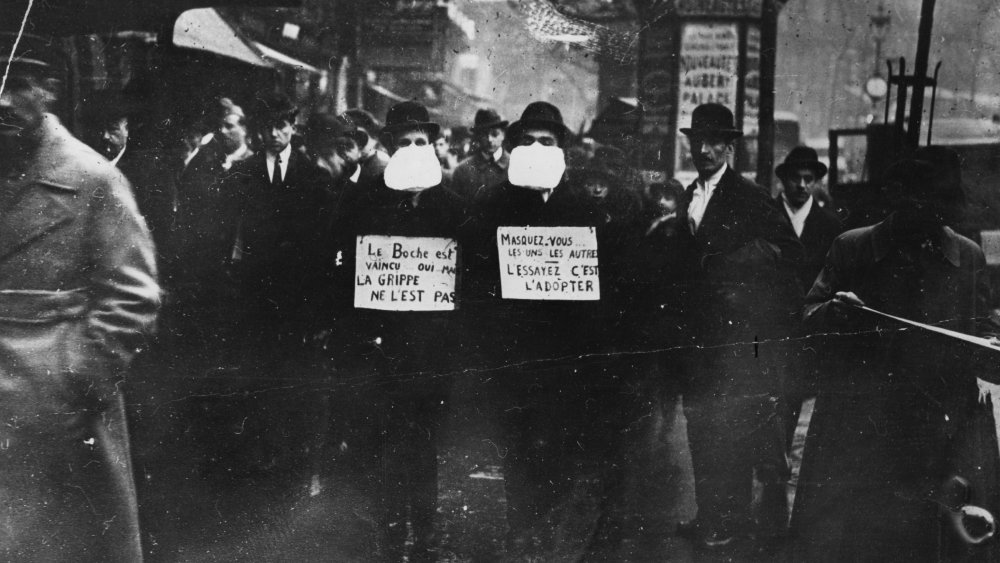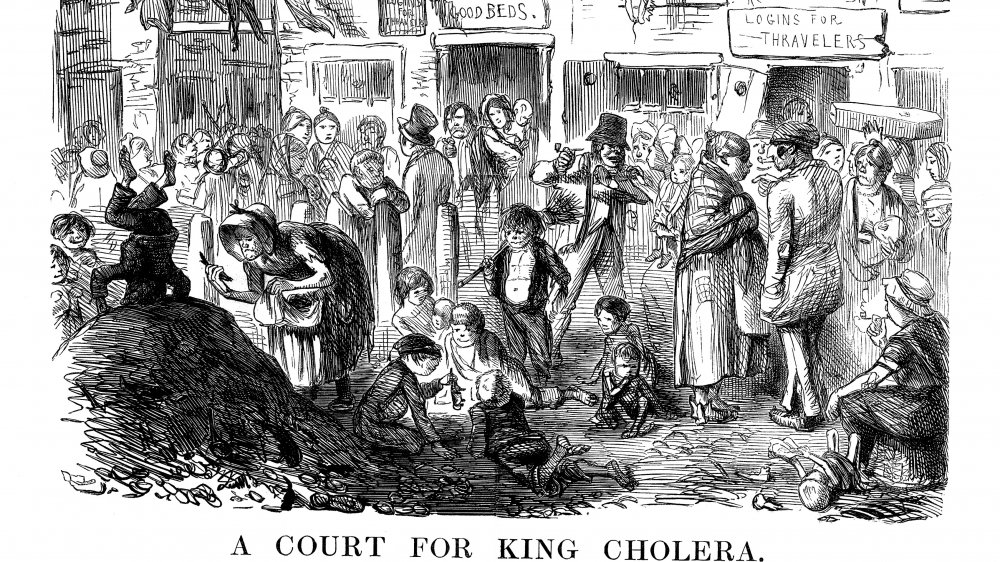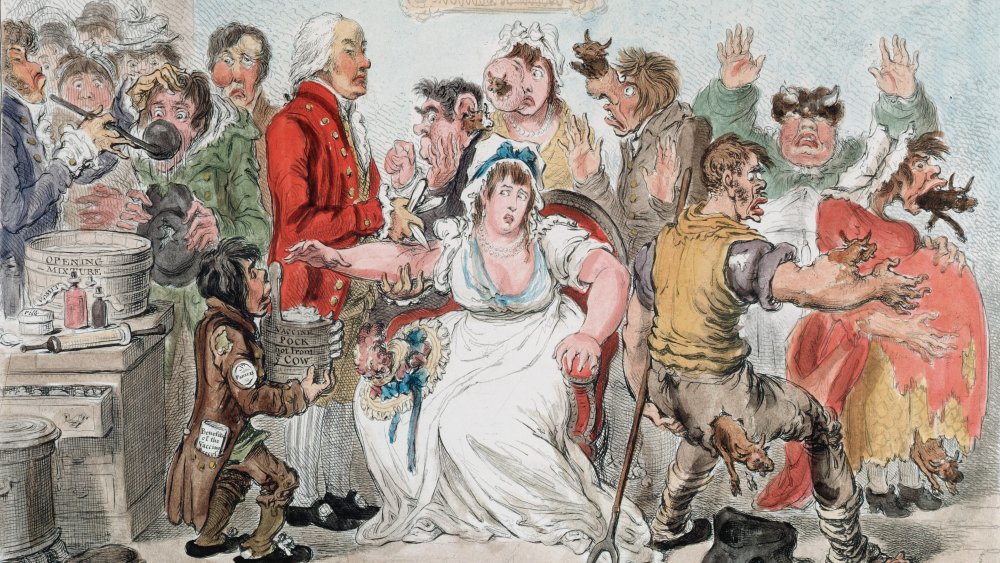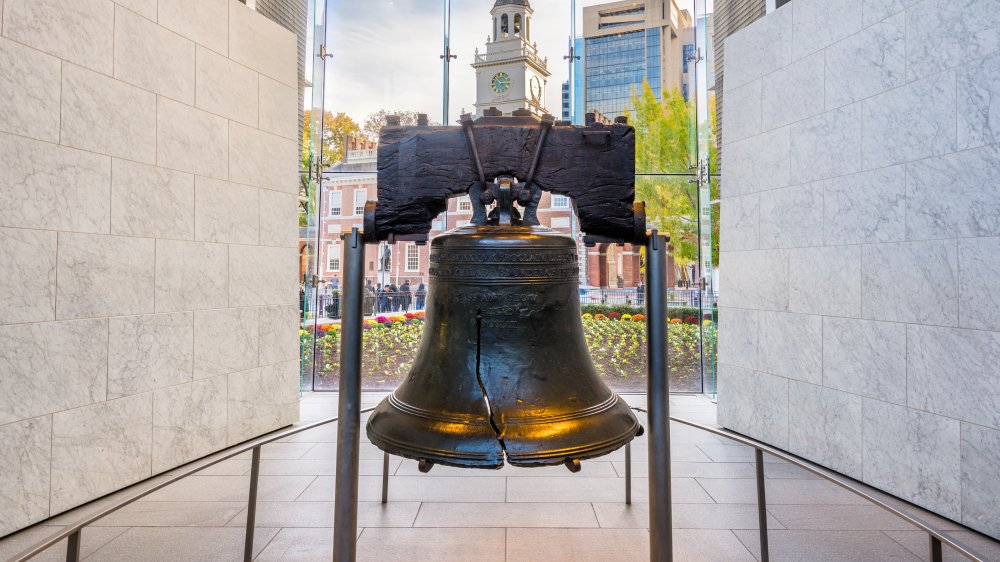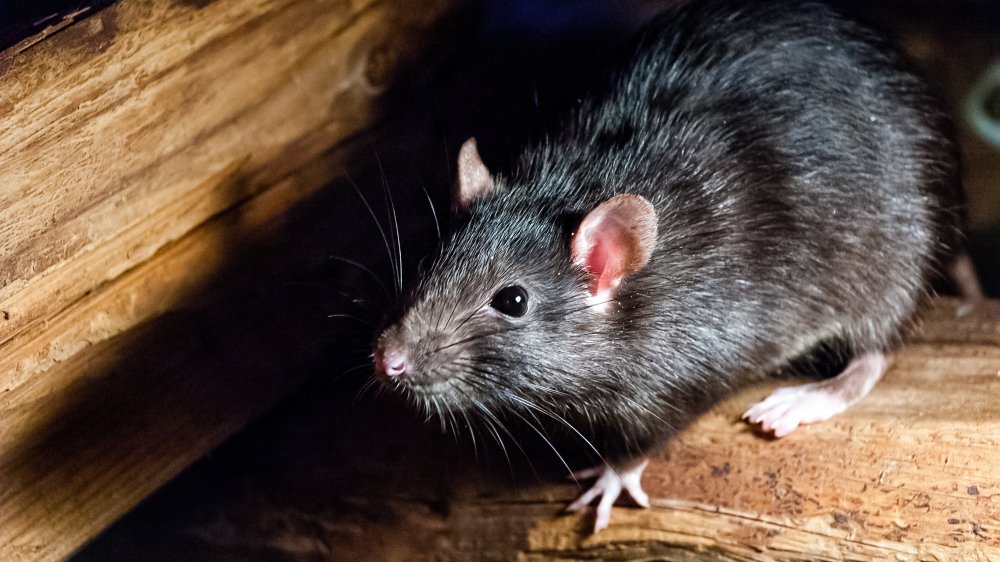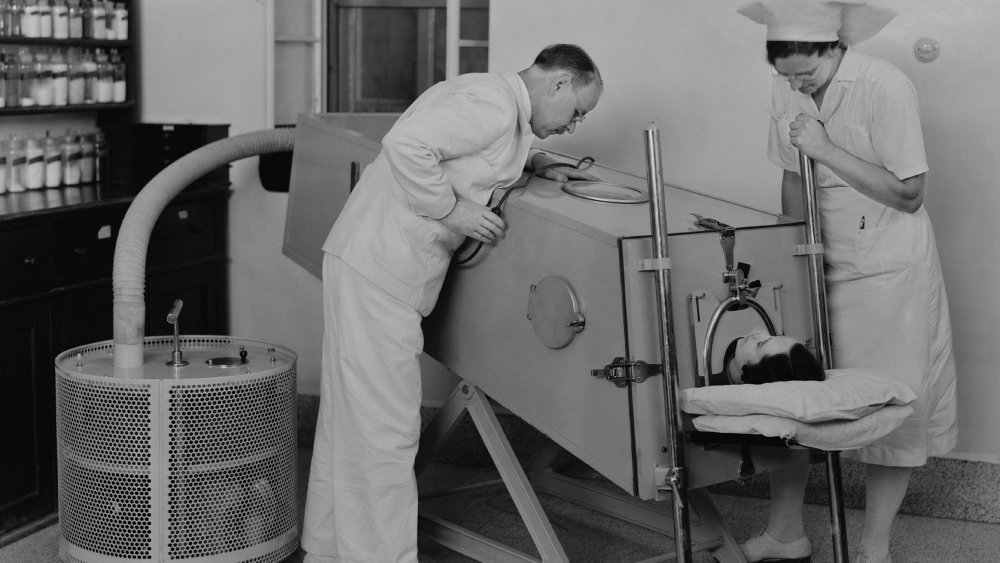Here's What Brought History's Worst Pandemics To An End
A pandemic is a terrible thing to live though. An inescapable illness, marching across the world, claiming lives and leaving nothing but more illness, death, and hardship in its wake... that's dire stuff.
And it's happened a lot. The Black Death might be the most famous one, but there's also been widespread outbreaks of things like cholera, influenza, smallpox, yellow fever, and Ebola. The symptoms might be different, but they have some things in common: those who catch it are invariably left confronting the idea of their own mortality.
There is, however, a light at the end of the tunnel: pandemics will come to an end. The death toll will stop rising, the symptoms will vanish, and those still living are left to pick up the pieces. Just what brought some of history's deadliest pandemics to an end varies, but there's a commonality that they all have: people needed to look out for each other. Let's see what lessons can be learned from the end of some of the world's worst pandemics.
The Black Death, 14th century edition
There's a lot we don't know about the Black Death: we found that estimates of a 14th-century death toll range from 25 million people up to 60 percent of the population. One thing that's not debated is that it was a terrible way to go: we've also learned that bubonic plague kills by infecting the lymph nodes, kicking off a round of vomiting, fever, and chills, then finally ending in a lot of death. Isn't history awesome?
So, what ended the Black Death? Some old-fashioned social distancing seems to have had a lot to do with it. The practice of isolating the sick has been done for a long time, but according to Emerging Infectious Diseases, the idea of quarantine is a little different. That's separating people who have (or may have) been exposed to a disease from those who haven't been, and that first started in 1377. The Great Council of Ragusa (which is now Dubrovnik) instigated a strict 30-day quarantine period before anyone could enter their city.
That was later raised to 40 days, and other measures were put in place, too. The Centers for Disease Control and Prevention says ships were required to carry clean bills of health, or declare their possible plague status while still out to sea. Conversations with those on board were held from a lifeboat, and while the theory behind social distancing wasn't quite right, it worked.
The Black Death, 17th century edition
The Black Death — bubonic plague — lingered for a long time. London saw a massive outbreak in 1665, and during that single summer, it killed around 15 percent of the city's population. But it didn't last nearly as long as previous outbreaks for some strange reasons. For starters, plague orders were issued. According to the Wellcome Collection, that included closing down non-essential city services and social spaces, restricting burials, and appointing officials to roam the streets looking for signs of plague. If one person was infected, the entire home and its inhabitants were sealed inside for 28 days. A red cross was drawn on the door, along with the words "Lord have mercy on us," and volunteers were tasked with making sure occupants had food.
There's a big "but." Because plague was spread by fleas and not through human-to-human contact, sealing people in their homes didn't really help. But it did help slow trade as people became more cautious, and that likely did help: fleas were common hitchhikers in fabric goods, and not spreading them around was a good thing. Fortunately, many of those plague-carrying fleas died when the cold autumn months moved in.
Then, there was the Great Fire of London in 1666. That, says Historic UK, destroyed not only a lot of the city, but it also helped kill off plague-carrying rats and fleas, which just goes to show there's a bright side to some tragedies after all.
Spanish flu: out of the frying pan and into the fire
At the end of World War I, nations were facing Spanish flu, a deadly strain of influenza. At first, leaders like US President Woodrow Wilson tried to downplay the severity of the situation, but it infected 500 million and it killed between 20 and 50 million people... although we found that some places suggest a much higher death toll.
National Geographic says that as the flu swept across the US, cities had different responses, which allows us to see just what worked. The answer? The cities — like Minneapolis, St. Louis, and Indianapolis — that enacted social distancing measures and the closure of public spaces sooner and for a longer period of time had fewer cases and lower death rates. St. Louis, for example, had a death rate half that of Philadelphia. Why? St. Louis shut down public gatherings and imposed a quarantine, while Philadelphia gathered 200,000 people together for a parade.
Other measures included mandatory face masks, restrictions on public transportation, and a ban on public gatherings. But it worked, and slowed the spread long enough for the second part of the equation. According to The Washington Post, those who contracted Spanish flu and recovered developed an immunity to the virus. That led to it becoming less lethal, and eventually it mutated into some of the flu strains that are still circulating today.
Ebola: fighting a disease with a 50/50 chance of life or death
In 2019, The Washington Post was reporting on some terrifying news: Ebola had been stopped before, but it was a success story that might be difficult to repeat.
In 2014, word got out that three West African nations were losing their battle to keep Ebola contained. US President Barack Obama initiated what they called "the most robust response to a viral outbreak in American history." Around 3,000 troops were deployed to Liberia to build facilities necessary to trace and stop the spread, as well as treat and quarantine patients, and it worked — partially because of unparalleled support. Other countries sent thousands of international aid workers, and volunteers from across Liberia, Guinea, and Sierra Leone stepped up to help keep the disease contained — and deliver vaccines. According to the World Health Organization, a key component was the development of a vaccine used in trials in 2015 and found to be successful in protecting against the transmission of the virus. And that's a huge deal: during the 2014 outbreak (which the WHO declared was over on June 9, 2016), there were 28,616 cases, and 11,310 deaths.
Why is this going to be a tough win to repeat? When other outbreaks of disease have happened in the same area, the WHO has recorded several hundred attacks on health care workers, and even Doctors Without Borders has pulled out of some of the most dangerous cities.
19th century cholera: clean water is so important
Cholera, says the CDC, is a potentially deadly disease: it's a bacterial infection that causes severe diarrhea and vomiting that — in about 10 percent of cases — can lead to dehydration and death. Today, we know that it's mainly spread through contaminated food and water, but when cholera outbreaks swept across England in the 19th century, they had no idea where it was coming from.
It started in 1831, says Wired, and kept happening. More than 10,000 people died in Newcastle and London in 1853, and when it started happening again in Soho in 1854, that's when people started fleeing the cities. Fortunately, Soho had a doctor named John Snow. When he started interviewing families, he found they were all using the water pump on Broad Street. After taking a water sample and finding some gross-looking stuff in it, he convinced the district to remove the handle of the pump. Cases immediately dropped off.
The culprit? Snow found his Patient Zero, a baby who had been diagnosed with cholera and whose diaper had been washed in water that was dumped into a cesspool just a few feet from the water supply. More than 600 people died before the pump handle was removed, and Snow was eventually credited with discovering just how cholera could be spread from a single, contaminated drinking source.
Smallpox: a disease and a weapon
The history of smallpox is a long and tragic one, and it starts at least in Ancient Egypt. According to National Geographic, it was known as one of the world's deadliest diseases for several thousand years, killing three out of every 10 people who contracted it, and spreading across the globe in a series of outbreaks. The World Health Organization says smallpox has now been eradicated, and the last natural case was in 1977. How'd we do it? An English country doctor named Edward Jenner discovered a vaccine at the end of the 18th century.
His work exposed him to cowpox, which was a version of smallpox present in cattle. Jenner noticed that those who milked cows with cowpox often came down with a case themselves, but if they were later exposed to smallpox, they'd have immunity. Jenner took a sample of pus from a woman infected with cowpox, used it in the son of his gardener, and waited. The boy ultimately became immune to smallpox, and after he tried it with another 22 people, he declared it effective.
Some remained unconvinced: the above cartoon is from smallpox anti-vaxxers, but today? There's no more smallpox, and people don't have cows growing out of them, so we'll leave you to draw your own conclusions.
The Plague of Cyprian: the end of the world
In the third century, a series outbreak ravaged the Roman Empire in what's now called the Plague of Cyprian. It lasted from 250 to 271 — give or take — and in some places, it killed as many as 5,000 people a day. It's no wonder, then, that some thought they were witnessing the end of the world.
The plague is credited with severely weakening the Roman Empire, and according to LiveScience, we know what happened to those who got sick: vomiting and diarrhea, deafness and blindness, and sometimes "diseased putrefaction" took the limbs of the infected. Some were paralyzed, and some started bleeding from their eyes. According to Ancient History, no one's sure what it was, but one of the likeliest candidates was a viral hemorrhagic fever.
What brought the plague to an end is a bit of a mystery, but in 2014, archaeologists found a clue as they excavated the Funerary Complex of Harwa and Akhimenru in what's now Luxor, Egypt. There, they found layers of human remains covered with lime, which was widely used as a disinfectant. Also at the site were three massive kilns used for making the lime, and bonfires where more corpses were burned. There was no sign of religious or burial rites, just a mass destruction of infected corpses. They knew the bodies were dangerous, and as archaeologist Francesco Tiradritti put it: "They had to dispose of them without losing any time."
The Cocoliztli epidemic: the end of the Aztec?
Between 1545 and 1550, the Aztec empire was decimated by the outbreak of an illness they called cocoliztli. As many as 15 million people died, and according to National Geographic, no one's really ever been sure what caused the deadly illness... until now. Maybe: based on DNA samples from teeth, it might just have been a form of salmonella.
That's still a pretty big "maybe," but researchers do think they've got an idea of what might have opened the door to this outbreak and allowed it to be so bad — along with what brought it to an end. According to research published in Emerging infectious Diseases, data largely gathered from tree rings has allowed for the reconstruction of the climate in those years, and at the time, North America and Mexico were in the grip of the worst drought of the past 500 years.
During that period, many of the Aztec had been enslaved under the system called "New Spain." They were overworked, poorly fed, subjected to unthinkable abuse, and severe weather conditions made the population extremely vulnerable to the pathogens that swept through the area. Alternating extreme dry periods — followed by extremely wet periods — have been linked to an increase in potentially disease-carrying pests like mice, and when the weather stabilized, outbreaks of disease subsided.
Philadelphia's yellow fever outbreak: in 1793... and again, and again
The summer of 1793 was one of the hottest in memory, and when people in Philadelphia started dying, many — including George Washington, Thomas Jefferson, and all of Congress — had already fled the city. But those they left behind died by the score, and according to the Penn State Libraries, the only sounds on the streets of Philly were the mosquitoes and the carriages, picking up the dead. Around 4,000 people died from yellow fever, a disease spread by mosquitoes and characterized by the appearance of purple patches on the skin. That's the start of the internal bleeding and hemorrhaging, which eventually leads to death.
Residents had one champion: Dr. Benjamin Rush. He stayed while others left, and — convinced unsanitary conditions were key — he kicked off a campaign to clean up the city. In particular, he wanted to get rid of standing water and exposed sewage. That helped, but other treatments — like bloodletting, purging, and administering a compound made from mercury — were less helpful.
The 1793 outbreak subsided when winter came, and the mosquitoes carrying the disease disappeared. But it returned just as quickly, and yellow fever remained one of the most devastating diseases in the hemisphere until the Reed Commission — led by US Army surgeon Major Walter Reed — discovered control methods at the turn of the 20th century (via the National Museum of the United States Army).
Los Angeles' 1924 plague outbreak
It started, says the Los Angeles Times, when Jesus Lajun tracked down the source of an overwhelming stink. He picked up the decaying rat, tossed it in the trash, then regaled his neighbors with the hilarious tale. His 15-year-old daughter was dead within the week, and was quickly followed by a neighbor, then her family... and Lajun himself.
Plague had come to San Francisco, on board one of the many ships that had come into port. The whole thing was originally kept hush-hush, and it was almost a month after the first death that hospital officials realized what they were dealing with.
So, what happened? A strict quarantine, enforced by police and World War I veterans recruited to help keep the infected within the boundaries that were set. Around 2,500 people were quarantined because of what was reported to be "a Mexican disease," and 37 people died. Quarantine worked, though: it was lifted after two weeks, and just to be sure, LA then spent $50,000 on an extermination program. (Some sources say it was more along the lines of $250,000.) It was later reported that 157 rats (along with five squirrels) were found to be infected with plague... and then, they demolished most of the run-down or abandoned buildings downtown. They also completely destroyed the area known as "Little Mexico," says Curbed, and since the homes demolished were considered a threat to public health, most were given no compensation.
The polio outbreaks of the 1950s
In the 1950s, polio was a very real fear: it was one of the most communicable diseases in the US at the time. What is it? The CDC says it's caused by the poliovirus, and most people don't even have any symptoms. One in four will develop a flu-like illness, but in others, the disease attacks the brain and spinal cord. The result ranges from paresthesia (the sensation of pins and needles) to paralysis. Sometimes, it's the muscles a person relies on to breathe that become paralyzed, and that's when it gets deadly (or requires help from an iron lung, like the one in the picture).
The first major outbreak happened in 1894, and by 1946, NPR says President Truman had declared it a major threat to American health. The first attempts at finding a vaccine didn't go well. When New York University tried their vaccine on 10,000 children, nine died.
Jonas Salk's two million-kid pool of test subjects was pretty outrageous, and just the sort of thing that probably wouldn't happen today. But it worked: Salk and Albert Sabin from Cincinnati Children's Hospital came up with a pair of vaccines that were effective, and the last case of polio was recorded in 1979.
Whatever happened to the swine flu?
Starting in the spring of 2009, the world was unanimously worried about a seemingly inevitable pandemic: H1N1, or swine flu. A pandemic wasn't officially declared until June 11, and by the time it was officially over, 18,500 people were dead... officially, that is, as the real death toll was thought to be much, much higher. But when Science covered the news that the pandemic was over, they were also covering the fact that the World Health Organization was being accused of overreacting to the whole thing. The WHO stood by their warning — they had claimed "moderate severity" — and stressed that while it wasn't as bad as some had thought it should be, it was still pretty bad.
Confusing? Absolutely. In 2013, Forbes looked back and pointed out that we just sort of stopped hearing about it. For most, it ended up being just another run-of-the-mill sort of flu. For others, it was deadly. And here's the thing: as Forbes says, the panic might not have been justified, but we only know that in hindsight. "[...] the warnings beforehand, about the possibilities of a pandemic, were legitimate," they note. We didn't know how scary it was going to be until it was full-blown.
It's still around, by the way: the NHS says if you've had the flu in the past few years, you've probably had the H1N1 strain, and it's now a part of the annual flu vaccine.

